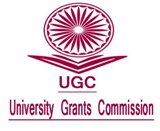Small Farm Goat Production in Semi-Arid Region of Uttar Pradesh
Abstract
Majority of selected goat farmers were landless and marginal (69%) with an annual average income of Rs.I9200.00. However, average income of small and medium goat farmers were about Rs.25500.00.Ownership pattern of goats revealed that about 78% goats were owned by the landless and marginal farmers. Majority of the farmers had Barbari/Barbari type goats (54%) followed by non-descript (43%) and Sirohi type goats (3%). Furthermore, 69 per cent goat houses were of Kaccha type and 49 per cent of selected respondent availed private veterinary services for their goats however, 40 percent of the goat farmers used home remedies. Merely, 11 per cent of the respondents visited government veterinary hospitals Though, poor socio-economic status cannot be ignore for the goat improvement in study village, some policy support is imperative to encourage goat farmers for their overall development.References
Ahuya,C.O., Okeyo,A.M.,Mwangi, D.M. and Peacock,C.2004. Developrentalehallenges and Opportunitiesin the Goat Industry: The Kenyan experience, 8th International Conference on Goats, July 4-9, University of Pretoria, Pretoria,
South Africa.
Birthal, P.S, Dikshit, A.K. and Negi, D.S. (2013). Economic and Environmental Contributions of Livestock in Mixed Farming Systems in India, Paper presented at the National Seminar on
“New Paradigms in Livestock Production: From Traditional to Commercial Farming and Beyond” held at National Dairy Research Institute, Karnal on January 28-30, 2013.
Devendra, C. & McLeroy, G.B., 1982. Goat and Sheep Production in the Tropics. Longman: London and New York.
Dikshit, A.K., P.S. Birthal and A.B. Bhatt 1995. Role of Credit in Goat Marketing, Agricultural Marketing: A Quarterly Journal, Vol.XXVII, No.3.
Erenstem, 0, Thorpe W, Singh J and Varma A., 2007. Crop Livestock Interaction and Livelihoods in the Trans-Gangatic Plains, Crop- Livestock Interactions Scoping Study-Report
, Research Report 10, ILRI (International Livestock Research Institute), Nairobi, K.enya.89pp.
FAO STAT. Food and Agriculture Organization (FAO), www.fao.org
Mohan, Braj., Singh, Khushyal and Dixit, A.K.2012. Socio-Economic Status of Goat Farmers in Semi-Arid Zone of Uttar Pradesh. Indian Research Journal of Extension Education Special Issue (Volume I), January, 2012
Downloads
Published
How to Cite
Issue
Section
License
Authors who publish with JEE agree to the following terms:
- Authors retain copyright and grant JEE right of first publication with the work simultaneously licensed under a Creative Commons Attribution License that allows others to share the work with an acknowledgement of the work's authorship and initial publication in this journal.
- Authors are able to enter into separate, additional contractual arrangements for the non-exclusive distribution of the journal's published version of the work (e.g., post it to an institutional repository or publish it in a book), with an acknowledgement of its initial publication in this journal.
- Authors are permitted and encouraged to post their work online (e.g., in institutional repositories or on their website) prior to and during the submission process, as it can lead to productive exchanges, as well as earlier and greater citation of published work (See The Effect of Open Access).
Extension Education Society
https://creativecommons.org/licenses/by-nc-sa/4.0/
This work is licensed under a Creative Commons Attribution-NonCommercial-ShareAlike 4.0 International License.









.png)

